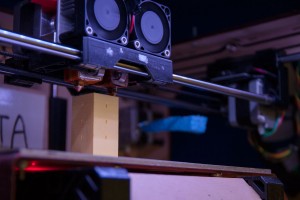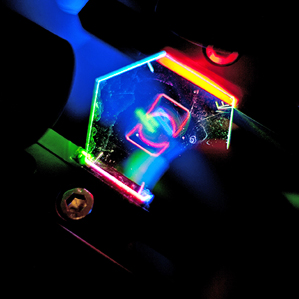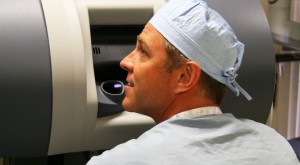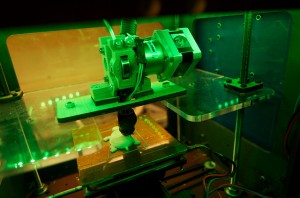London-Based Startup 3D Industri.es Aims to Become the Google of 3D Search
[Philip Lelyveld comment; this appears to be truly innovative, AND meets a clear need.]
Halfway between the Chinese factories and Silicon Valley tech giants, right in the heart of London’s emerging tech scene, is a startup that aims to revolutionize both manufacturing and internet search.3D Industri.es (3DI) commercializes advanced 3D search technology, creating applications based on its geometric shape-based 3D search engine. Its first product, 3Dpartsource.com, a visual component-sourcing platform for industry, has the potential to disrupt the age-old sourcing process for parts in the manufacturing supply chain.
With 3DI, an industrial designer looking to source components can upload a 3D design into the 3D search engine which immediately returns a list of matching suppliers worldwide.
Read the full story here: http://www.forbes.com/sites/juliepham/2013/03/27/london-based-startup-3d-industri-es-aims-to-become-the-google-of-3d-search/
UC Berkeley Students Build 3D Printing Vending Machine
 [Philip Lelyveld comment: since they are using off-the-shelf products and an ejection arm, the most interesting part of the story is knowing that UC Berkeley has an inhouse accelerator.]
[Philip Lelyveld comment: since they are using off-the-shelf products and an ejection arm, the most interesting part of the story is knowing that UC Berkeley has an inhouse accelerator.]
Combining 3D printing technology with the convenience and accessibility of the DVD-dispensing Redbox service, student entrepreneurs at UC Berkeley have built a vending machine with a seemingly infinite selection of products.
The Dreambox, which now lives in the campus’s Etcheverry Hall, is the first fully automated 3D-printing vending machine, representing a step forward in the democratization of the still-young technology.
You can print almost any object using its touchscreen and watch said object materialize before your eyes. When the print is complete, a mechanical arm will push the object into a locked drawer for safekeeping until you pick it up.
In Dreambox’s office at Berkeley Skydeck, the university’s technology startup accelerator, Berwick, along with his co-founders David Pastewka, the CEO, and Will Drevno, COO, were fixing some final glitches with "Dolly," the vending machine’s nickname.
So far, Dreambox has completed more than $1,000 in prints, and could be profitable in a matter of months if it’s used at full capacity.
See the full story here: http://science.kqed.org/quest/2013/03/26/uc-berkeley-students-build-3d-printing-vending-machine/
3net adds native 3D and 4K projects
[Philip Lelyveld comment: this is a potential source of native content for the ETC's 4K market research project.]
The new 3D series will be available for global distribution and the studio is finalising post-production on a returning series for the 3net U.S. linear service. In addition, the company has put three new native 4K TV series into development to help keep pace with the growing worldwide demand for Ultra HD content. The announcements were made today by Tom Cosgrove, president and CEO, 3net and 3net Studios.
“The global growth of 3D TV into the home increased by 72% in 2012, and we’re starting to see the impact of those 41 million new sets sold last year as consumers around the world look to their entertainment providers for compelling, original 3D content,” said Cosgrove, in a statement.
“And with a 2013 forecast of continued dramatic 3D TV penetration – and now a faster than anticipated rollout of 4K – 3net Studios is bolstering our current roster of original 3D and 4K production to keep pace with the growing demand from the global marketplace.”
See the full story here: http://www.broadbandtvnews.com/2013/03/26/3net-adds-native-3d-and-4k-projects/
Singapore to Invest Heavily in 3D Printing
[Philip Lelyveld comment: there is no mention of how much of the money will be dedicated to 3D printing growth.]
The government of Singapore has stated that, over the course of the next five years, it will invest $500 million into the country's advanced manufacturing technologies to maintain its competitiveness with its Southeast Asian neighbors.
Part of this multi-million dollar investment will be funneled to the development of training programs to help engineers and workers define and use next generation manufacturing technologies. Also included in this investment is a promise to begin "exploring the potential of building a new 3D printing industry ecosystem".
See the full story here: http://www.engineering.com/3DPrinting/3DPrintingArticles/ArticleID/5495/Singapore-to-Invest-Heavily-in-3D-Printing.aspx
Christie to Debut Laser Projection so 3D Doesn’t Look ‘Too Dark’
[Phil Lelyveld comment: Laser Projection is the next wave of improvement to the movie theatre experience. The first public implementation starts March 28 at the AMC Theatre’s Burbank 16 ETX theater projection of GI Joe in 3D. ]
The projector maker’s new technology will be used to screen "G.I. Joe: Retaliation" in 3D for paying audiences at AMC’s Burbank 16.
Next week, projector maker Christie’s laser technology will be used to screen Paramount’s March 28 release of G.I. Joe: Retaliation at AMC Theatre’s Burbank 16 ETX theater. This is believed to be the first time laser projection has been made available for paying audiences.
See the full story here: http://www.hollywoodreporter.com/news/christie-debut-laser-projection-3d-430321
New 3-D Display Could Let Phones and Tablets Produce Holograms
 Conventional 3-D—the type found in movie theaters—provides the viewer with only one perspective. The key to making a multiview 3-D display is reproducing all the light rays reflecting off an object from every angle and to get a different image to the left and right eye of the viewer. Some systems for producing multiview 3-D images require rapidly spinning mirrors; others use systems of lasers and multiple graphics processors.
Conventional 3-D—the type found in movie theaters—provides the viewer with only one perspective. The key to making a multiview 3-D display is reproducing all the light rays reflecting off an object from every angle and to get a different image to the left and right eye of the viewer. Some systems for producing multiview 3-D images require rapidly spinning mirrors; others use systems of lasers and multiple graphics processors.
The HP display uses nanopatterned grooves, which HP researcher David Fattal, who led the work, calls “directional pixels,” to send light off in different directions. This requires no new moving parts, and the patterns are built into an existing display component, the backlight.
The HP display replaces the randomly scattering bumps in a normal LCD with deliberately patterned grooves. Each “directional pixel” has three sets of grooves that direct red, green, and blue light in one particular direction. The number of directional pixels determines the number of viewpoints the display can produce. Light from the pixels then passes through a conventional array of liquid crystal shutters that pass or block the light to make a moving image—just like in a conventional LCD.
The HP researchers showed that they could make static images with 200 viewpoints, or videos with 64 viewpoints and 30 frames per second—so far.
HP creating glasses-free 3D tech for smartphones, tablets
Creating 3D for mobile devices is far different than for movies, however. According to Nature, this technology would look like a hologram but is created somewhat differently.
Using a "multiview" approach, the technology uses various geometric optical tricks to create the 3D images. Tiny circular grooves are also etched onto the device's surface, which pop out different views and colors. What's created is a wide viewing angle so that users can see an image in 3D even if they are tilting and moving the screen.
See the full story here: http://news.cnet.com/8301-10797_3-57575498-235/hp-creating-glasses-free-3d-tech-for-smartphones-tablets/
Where to find a 3D printer nearby
There’s the 3D-printing vending machine model, the DIY 3D printer, and now there’s a website to find nearby 3D printers for quick turnaround on printing jobs.
makexyz.com is a simple website that allows anyone with a 3D printer to rent out their services to anyone with printing needs.
The closest printer to me, for example, is a Prusa Mendel I2 that uses ABS Plastic in numerous colors. The price: 50 cents per cubic centimeter.
Could FedEx Kinko’s (or other printing service chains) become the “Kinko’s of 3D printing?”
See the full post here: http://www.smartplanet.com/blog/bulletin/where-to-find-a-3d-printer-nearby/15066
3D and 4K UHDTV technology help make surgeons better
 The Fraunhofer Institute for Telecommunications, Heinrich Hertz Institute HHI, and Klinikum rechts der Isar University hospital have conducted a study comparing 2D, glasses-free 3D, and 3D with glasses.
The Fraunhofer Institute for Telecommunications, Heinrich Hertz Institute HHI, and Klinikum rechts der Isar University hospital have conducted a study comparing 2D, glasses-free 3D, and 3D with glasses.
Displaying on a UHD 4K monitor, the 3D test that included glasses took 15% less time than with standard 2D imaging. More importantly, it allowed more precise movement from the surgeon.
See the full story here: http://www.extremetech.com/extreme/150170-3d-and-4k-uhdtv-technology-help-make-surgeons-better

